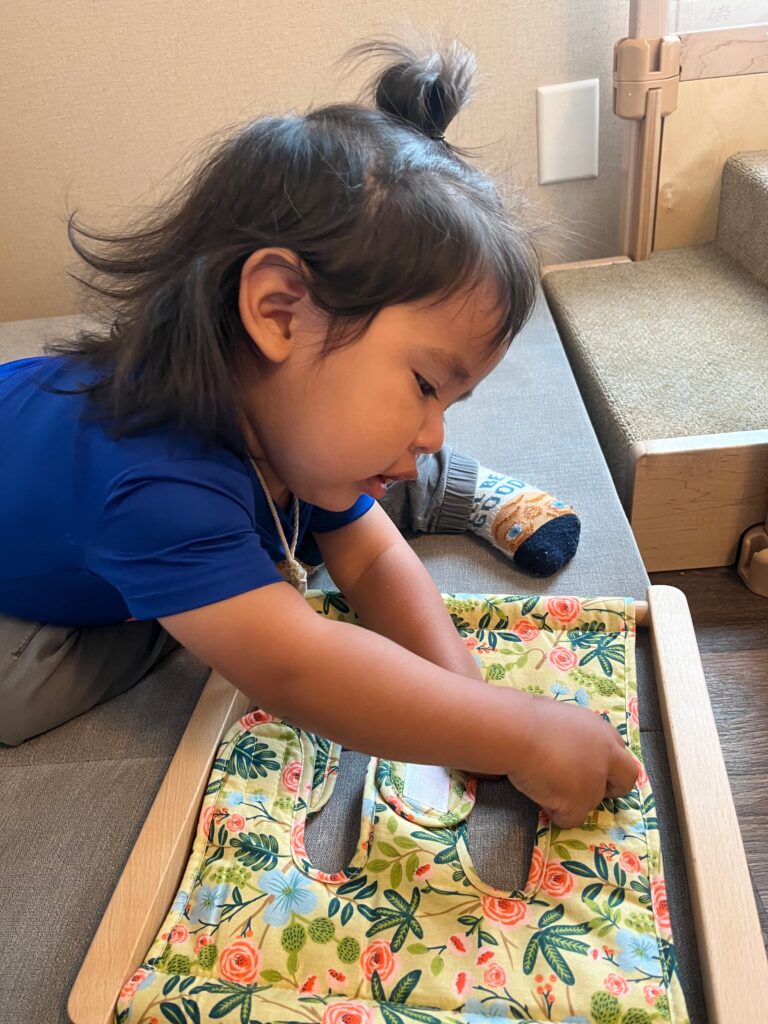
Language is more than just a mode of communication. According to the National Congress of American Indians, “language is not simply a collection of words; nor is one language interchangeable with another. In many ways, language is culture.” For Indigenous communities in New Mexico, it is a vital means to keeping their culture and history alive.
The Conrad N. Hilton Foundation’s Early Childhood Development (ECD) initiative is supporting our grantee partners in their work incorporating Indigenous language models and teacher training in their early childhood education programs. These efforts help infants and toddlers receive the holistic support they need to thrive in this formative part of their lives and helps to keep the language—and culture—of their communities alive.
As we celebrate Native American Heritage Month, we invite you to learn more about how we’re partnering with grantees to help preserve the histories and contributions of Indigenous populations in the U.S.
There’s only one place on Earth where the Cochiti dialect of the Indigenous Keres language is spoken: Pueblo de Cochiti in New Mexico. Ensuring people continue to speak the language is paramount to preserving their story and ancestry.

“When language dies, the old people say, it will be the end of deep understanding and of knowing,” wrote Hon. Regis Pecos, citizen of the Pueblo de Cochiti and co-director of the Leadership Institute at Santa Fe Indian School, one of our grantee partners. “Our ancestors’ voices will call out for us and we will be unable to respond.”
It’s critical for Indigenous languages to be baked into early educational programs, so infants and toddlers can hear their Native language at home, as well as in their school setting. Indigenous communities should be able to determine how they educate young children and incorporate their values and beliefs into early childhood programming. The Santa Fe Indian School Leadership Institute is committed to strengthening early childhood education programs through locally led initiatives, building the capacity of local communities to design and implement their own early childhood education programs.
Language is a connection between caregiver and child. It passes down core values unique to Indigenous cultures, including balance and harmony, forgiveness, and restoring the well-being of community. Pecos writes more about this in “Gifting Our Core Values to Our Children,” as part of the Foundation for Child Development’s Social Justice for Young Children Conversation Series.
“To fulfill our responsibilities toward our children, all tribal communities must be able to shape their education, guided by Indigenous values,” Pecos wrote. “We pass the gift of language to our children, just as we received this gift from our elders.”
Since 2012, grantee partner Keres Children’s Learning Center has been committed to incorporating the Keres language into their early childhood development programs and training teachers in Indigenous practices.

“The mission of KCLC is built around reclaiming the education of our children and revitalizing the Keres language. Our Iiwas (children) deserve to experience an education that honors their language, culture and traditions,” said Celeste Naranjo, Cochiti tribal member and Head of School.
To that end, KCLC built IMI from the ground up, combining Indigenous knowledge systems and the Montessori philosophy for a child-centered educational approach.
“Montessori allows us to create curriculum that reflects the aspect of our own Cochiti Pueblo community and also allows us to embed our own Indigenous knowledge systems in the education of our children,” Naranjo said.”
The broader Cochiti community also provides input for KCLC’s programs to ensure they meet the needs of local families. Every winter, for instance, KCLC works with the community to stage a play fully spoken in Keres. Everyone from first-year students to grandparents is included.
The Hilton Foundation will continue to support KCLC as they work to expand their early childhood center, establish a permanent location for infant and toddler education, and develop new teacher training courses for Indigenous teachers. KCLC also hopes to provide a model for other Tribal communities across New Mexico to incorporate Indigenous language immersion practices into their educational programs.
The hope for this innovative approach to early childhood development is to help Indigenous students to find meaning through this vital connection to their families and culture.